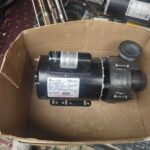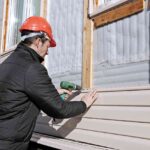Fire safety isn’t a small thing in a big city like New York.
With tall buildings packed together and millions of people living and working in them, having good fire alarm systems saves lives.
Every beep, flash, and warning signal gives people time to get out safe when smoke or flames happen.
Let’s talk about what NYC building owners need to know about these systems—from the rules they must follow to smart tips that keep everyone safer.
Why Fire Alarm System Is For NYC Buildings – Compliance Requirements And Best Practices Overview
Think about it—NYC has more than a million buildings.
Each one needs protection.
Fire alarm systems work like watchful guardians that never sleep, checking for danger 24 hours a day.
These systems don’t just make noise when fire happens.
They talk to emergency services, help people find exits, and sometimes even fight the fire themselves by turning on sprinklers.
Without them, small fires could become huge disasters fast.
NYC has super strict rules about these systems because history taught hard lessons.
After tragic fires in the past, the city created tough rules to make sure buildings have the right protection.
NYC Regulatory Landscape
NYC has a bunch of rules about fire safety.
The main ones come from:
- The NYC Fire Code
- The Building Code
- Local Law 26
- Local Law 58
- Local Law 5
These aren’t just random rules.
They were written because of real fires that hurt people.
Each one fixes problems that caused trouble before.
Different buildings need different things.
A tiny apartment building doesn’t need the same system as a giant hotel. The rules change based on:
- How tall your building is
- When it was built
- What people use it for
- How many people are inside
The Fire Department (FDNY) checks to make sure everyone follows these rules.
They visit buildings, look at the systems, and can give tickets if things aren’t right.
Fire Alarm System Compliance Requirements
Getting your building up to code means meeting specific requirements.
Here’s what you need to know:
You need a licensed professional to design your system. Not just any electrician will do. The person must understand NYC fire codes completely.
All parts of your system need approval from the city. This means each smoke detector, control panel, and alarm bell must have official testing that proves it works right.
Professional alarm fire system providers guide clients through the regulatory process, saving lots of headaches along the way.
Your building needs regular inspections. How often depends on the building type, but nobody gets to skip these checkups.
The paperwork matters too. You must keep records of all tests, inspections, and repairs. If the FDNY asks to see these papers and you don’t have them, you could get fined.
Types of Required Detection and Notification Systems
NYC buildings need different kinds of fire safety equipment:
Smoke Detectors: These sniff out smoke before you can see flames. They’re the first warning that something’s wrong. Some are basic and just make noise, while others connect to the whole building system.
Heat Detectors: These notice when a room gets too hot too fast. They work great in kitchens or other places where normal smoke might happen without a fire.
Manual Pull Stations: Those red boxes on walls that say “FIRE” – you pull the handle if you see trouble. They’re simple but super important.
Alarm Notification Devices: The things that make noise or flash lights when danger happens. These include:
- Horns and bells that make loud sounds
- Strobe lights for people who can’t hear well
- Voice messages that tell people what to do
Fire Control Panels: The brains of the system. They watch all the detectors and decide when to sound alarms or call for help.
Sprinkler Systems: Some buildings need these water systems that turn on automatically to fight fires.
Ongoing Maintenance & Testing
Your fire alarm system is only good if it works when needed. That’s why testing matters so much.
Monthly checks make sure everything turns on right. Someone presses buttons on the control panel to see if all parts work.
Yearly inspections go deeper. Trained experts test every single device. They make smoke near detectors to check sensitivity.
They measure sound levels of alarms. They even check if batteries have enough power.
What goes wrong most often? Dust in detectors makes false alarms. Dead batteries leave systems useless. Broken wires disconnect parts from each other.
If something breaks, fix it fast. Don’t wait. A broken system won’t save anyone.
Keep a notebook with dates of all tests and what happened. Write down when things broke and when they got fixed. The fire department can ask to see these notes anytime.
Best Practices for NYC Building Owners & Managers
Smart building managers do more than just meet the minimum rules. They go extra steps to keep everyone super safe:
Train your staff what to do if alarms sound. Have practice drills so nobody panics during real emergencies. Make sure new employees learn the plan their first week.
Put maps near elevators and stairs showing escape routes. Mark them with bright colors so they’re easy to spot even in scary situations.
Check your system after any construction work. Dust from projects can mess up detectors. New walls might block sounds from alarms.
Update your system before it’s outdated. Don’t wait for it to fail completely.
Listen to tenants who report problems. They might notice issues before regular testing finds them.
Pick a reliable company for maintenance. Cheap services might miss important problems. Quality work costs more but saves lives.
Cost Considerations
Fire alarm systems aren’t cheap, but think of them like insurance that actually prevents disasters instead of just paying for them after.
A basic system for a small building starts around $15,000. Bigger buildings with fancy systems can cost hundreds of thousands.
Where does the money go? About 40% pays for equipment. Another 40% covers installation work. The rest handles design, permits, and testing.
Yearly maintenance runs between $2,000-$10,000 depending on system size. This pays for regular testing and fixing small problems before they grow.
If your system is old, replacing parts costs less than waiting for them to fail.
Failed inspections mean fines that often cost more than just fixing the problem would have.
Many insurance companies give discounts to buildings with good fire systems. Ask yours if they lower rates for buildings that exceed minimum requirements.
Future Trends in NYC Fire Alarm Systems
Fire safety keeps getting better with new ideas. Here’s what’s coming:
Smart systems that talk to your phone. They send alerts if something’s wrong, even when you’re not in the building.
Better ways to find people during fires. New technology helps firefighters locate exactly where people are trapped.
Systems that work together. Your fire alarms can now connect with air conditioning, elevators, and security cameras to handle emergencies better.
Greener options that use less power but still provide top protection.
Self-checking systems that test themselves and report problems automatically.
NYC keeps updating its rules to match new technology. Staying current helps you avoid surprise requirements down the road.
Conclusion
Having good fire alarm systems in NYC buildings isn’t just about following rules—it’s about keeping people safe.
While the paperwork and inspections might seem like a pain, they prevent real tragedy.
The best approach mixes following the letter of the law with common sense practices.
Know the rules, maintain your equipment, train your people, and stay open to improvements.
Fire safety isn’t a one-time thing you finish and forget.
It needs ongoing attention. But that attention pays off big time when warning systems work exactly right during those critical moments when seconds truly matter.



